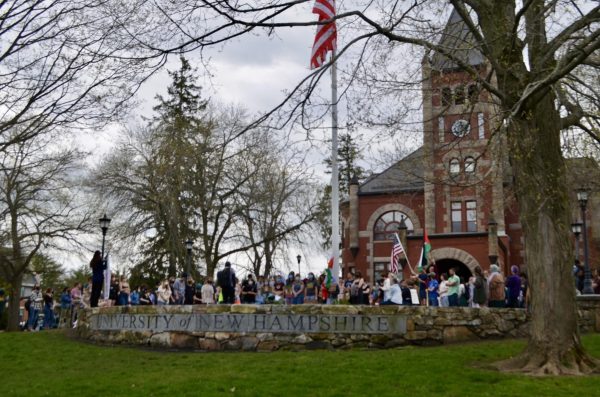In agreement with Town Council, Durham voters decide to remove Mill Pond dam
March 9, 2022
DURHAM – The Mill Pond Dam debate came to a close on Tuesday, March 8, when Durham residents voted 1706 – 596 to remove the dam. This choice affirms the Durham town council’s original decision in September of 2021, which was brought to a referendum after residents in favor of dam retention successfully petitioned. Removal is supported by various groups, including The Nature Conservancy, the Durham Conservation Commission and the Cowasuck Band of Pennacook-Abenaki People.
“I’m very gratified that people think the Oyster River should be healed, and things will be more natural with the dam gone,” said Kitty Marple, chair of the town council. “I’m also happy for future generations because this is the best route to go environmentally.”
The original dam removal contract with Vanasse Hangen Brustlin (VHB) will resume, and the firm will complete the project as outlined in the 2020 feasibility study. The town anticipates a 12-18 month final design and permitting process, where it will also work to secure grant funding. Construction is expected to take place in 24-36 months.
“I would anticipate local public engagement opportunities over the course of that timeframe dealing with important design aspects, to include historic mitigation, environmental, aesthetics, recreation, and more,” Todd Selig, town administrator, wrote in an email.
For precarious issues such as sediments, Durham will work with various environmental agencies to ensure the project won’t violate any regulations, according to April Talon, town engineer.
“We will be required to get various permits from the environmental agencies. We are going to follow the advice and guidance of the state agencies that issue [those] permits,” she said. “I hope people would be comfortable with not only the town, but NOAA, NHF&G, and even the Army Corp of Engineers [working on this project].”
Talon also stated if the town receives grant money from any environmental agency, then that would be another reason to abide by their requirements.
“If the town were to secure grant funding from NOAA for dam removal and river restoration, that means that we would be tied to them and have to follow their guidance,” she said. “I would hope that people would trust that those agencies wouldn’t allow the town to do anything that would harm the downstream reaches of the river.”
The dam, originally built about 400 years ago by Valentine Hill for a sawmill, is 140 feet long and forms the 9.5 acre Mill Pond impoundment. The current iteration is classified as an Amburson-styled dam and was given as a gift to the town by Edith Onderdonk, step-daughter of Hamilton Smith, in 1913. It is currently listed on the NH Register of Historic Places and is part of the area that makes up Durham’s Historic District, which is on the National Register of Historic Places.
Over the last decade, issues of water quality and structural integrity put the dam’s future in doubt, and several town-funded studies have been conducted to explore potential solutions. These studies informed the town council’s original decision to remove the dam. The pro-dam group, although disappointed, is looking forward to the collaborative removal process. They hope both the town and VHB will stay on schedule throughout the project.
“Our feelings are that we got to a position where the voters were making a choice. That’s where we wanted to be and in that sense it was a success,” said Sean Harrison, a vocal member of the group. “But now it’s about holding the town accountable and making sure they follow through on their promises to clean up the watershed.”































